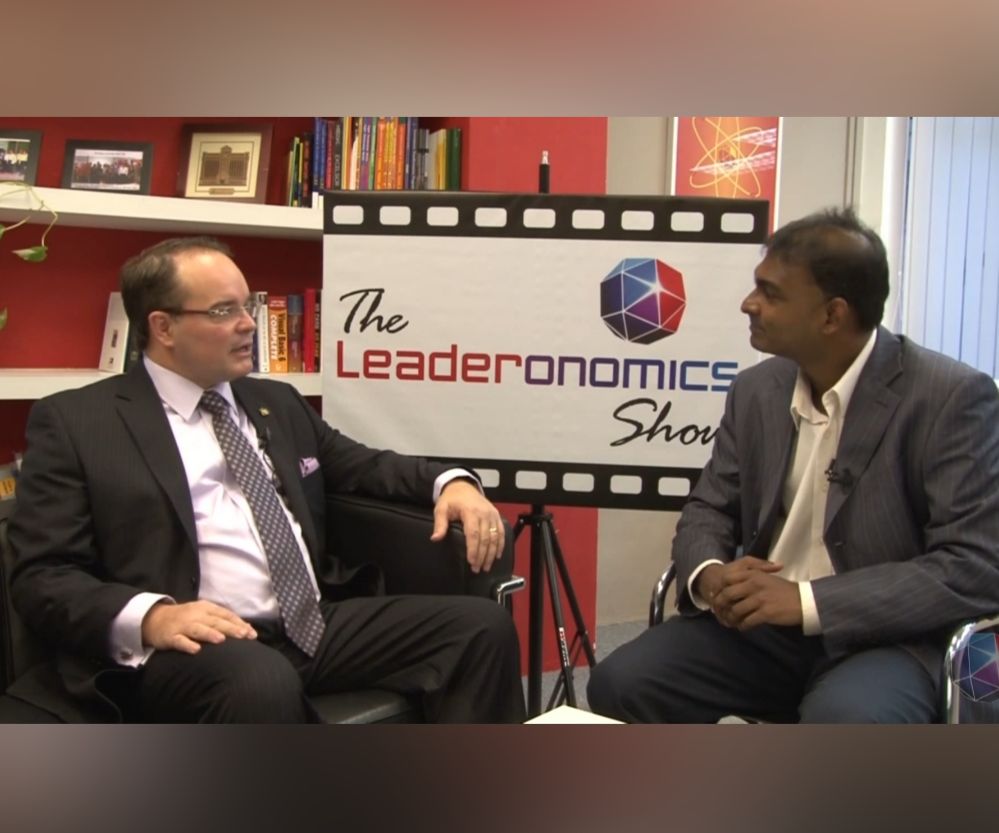Top HR Leadership Trends for 2023: Here's What You Need to Know

Vector image is from freepik.com by @storyset.
HR trends are continuing to evolve at an unprecedented rate thanks to the ever-changing work landscape due to the pandemic. The past few years have seen a sudden shift to remote work, great resignation, economic uncertainty, and political changes. More than ever, HR leaders must rise above these challenges to stay ahead of the curve and ensure their organisations remain competitive in the market.
These key trends have already had a significant impact on how businesses operate and adapt to disruption and change: flexible work arrangements, diversity, inclusion, and equality, as well as employee well-being. Moreover, these trends will only continue as organisations look to meld humanity and hybrid work.
As the year quickly comes to an end, let’s take a look ahead at the top HR trends for 2023 and how you can adapt your business strategy to stay ahead of the curve and prepare for what’s to come.
Taking An Employee-Centric Approach in 2023
Successful leaders had to learn and adapt quickly during the pandemic, and this trend will continue. As a result, leadership must now take an employee-centric approach to attract and retain top talent. That is, both in terms of recruitment and retention while also helping to define the future of work.
“To improve is to change; to be perfect is to change often.” – Winston Churchill
For HR leaders, these are the areas that will become the most critical priorities and trends in 2023:
1. The Employee Experience Is More Important Than Ever
The Employee Experience is the journey an employee takes from their first impression, through to the interview process, to the moment they join your organisation. It also applies during their employment, career development, and decision to leave your organisation.
These factors are all critical when shaping the employee experience, and it’s more important than ever for organisations to create positive employee experiences throughout these processes.
Since the pandemic, employee expectations have shifted significantly, with the employee experience having a considerable impact on attracting and retaining top talent.
According to a Tivan report, 85% of HR leaders believe they are using employee feedback to improve the employee experience. Sounds great, right? Yet only 50% of staff agree. Yikes! Even worse, only 14% believe the feedback is used very effectively to drive change.
A survey of HR leaders by Gartner for the top trends and priorities in 2023 found that 47% of respondents believe that the employee experience is one of the top priorities.
With society continuing to evolve, organisations must continue to do so while meeting employees’ expectations in today’s rapidly changing world.
What employees are looking for:
● Flexible work arrangements: Employees want to work remotely or have flexible hours.
● Diversity and inclusion: Employees are looking for organisations that promote diversity and inclusion in their workplace and recruitment processes.
● Equality: Employees want to feel they are treated equally regardless of gender, race, religion etc.
● Employee well-being: Employees have become more aware of the importance of looking after their mental and physical health. Employers must look to provide well-being initiatives that promote self-care, such as health insurance and access to mental health support services.
● Growth opportunities: Employees are looking for opportunities to challenge themselves and develop their skills, leading to personal growth and career development.
● Meaningful work: Employees want to feel connected to their work and that it has a greater purpose than just a job.
Gallup found that companies with an improved employee experience also saw a 10% increase in customer ratings and a significant increase in sales of 20%.
2. It’s Time To Humanise Employee-Manager Relationships
Gone are the days when employees would fear their managers or it was believed that you couldn’t develop meaningful relationships with colleagues.
More than ever, employees leave a job because of their manager rather than the company or work itself. A report from GoodHire found that 82% of workers would consider quitting their job because of a bad manager.
With hybrid work arrangements, leadership has become even more challenging for managers, along with increased expectations. With systems now well in place to support hybrid work arrangements, in 2023, leaders must change their priorities to grow relationships with new employees. They should also reconnect with existing employees to strengthen those relationships.
Employees want and need managers who treat them like people instead of just employees. They want managers who have empathy and are authentic.
Just like with employees, leaders also will need to be supported to upskill their soft skills through additional training such as leadership development programs.
At LeadershipHQ, we provide customised leadership programs to take your leaders to the next level. Through targeted workshops and coaching, we equip them with the necessary practical tools and skills they need to thrive.
According to a recent report, Australian workers experienced the highest burnout rate globally at 62%, compared to the global average of 48%.
More than ever, it is vital for managers to focus on developing human relationships with their teams, such as:
● Building trust: As well as mutual respect, this also involves providing meaningful feedback and encouragement.
● Creating psychological safety: This ensures that employees feel comfortable voicing their opinions, giving feedback and making mistakes without fear of retribution.
● Providing public recognition: Employees need to feel acknowledged for their work and be given credit when it is due.
● Sharing accountability: Managers need to share the responsibility and accountability of reaching goals with their teams rather than just handing out tasks.
● Regular check-ins: Regular catch-ups with team members can be used to listen, understand and tailor solutions to issues that arise. Meeting up in person, virtually, or over the phone is recommended to avoid misinterpretation from text messages or emails.
A more human approach to building workplace relationships can help increase morale and reduce employee turnover. It can also create a productive and positive working environment that can improve the organisation’s bottom line.
3. Talent Shortage: Preparing for the Future of Work
One of the biggest HR trends for 2023 is preparing for the future of work, given that there will be a significant talent and skills shortage in many industries.
This is due to the following:
● Older generations retiring from the workforce
● Changing priorities due to COVID
● Fewer skilled overseas workers migrating to Australia
● Recent University graduates not having adequate skills businesses require
In October 2022, the unemployment rate dropped to 3.4%, according to the ABS, the lowest level in Australia for 50 years. The talent pool is drying up fast.
With more employment prospects than most of us have ever seen, workers are now taking the upper hand and being more selective in their job search.
Whereas a higher salary in the past may have been enough to poach employees from competitors, there are now many more factors to consider. Such as flexible work arrangements, work/life balance, and career development opportunities.
Paying attention to employees’ needs and fostering a positive culture is key to retaining top talent in 2023. Organisations need to start thinking long-term, strategising how to attract, retain and develop their next generation of employees, and plan for future labour shortages.
Traditional recruitment strategies are already no longer effective. For example, job vacancies in Australia in August 2022 were 107.4% higher than in February 2022 before the pandemic.
To continue to attract top talent, organisations must implement strategies such as:
● Creating a diverse culture: This will enable your business to find new sources of talent, hire employees from different backgrounds, and create a more inclusive environment.
● Build your reputation: This could include creating a strong employer brand through social media campaigns, using recruitment marketing strategies, and developing referral programs. Become an organisation that people want to work at.
● Focus on employee development: Investing in employees’ long-term development is key to helping them reach their full potential. Career coaching, personal growth, and employee educational opportunities can help increase engagement, loyalty, and retention rates.
● Utilise Your Network: Foster relationships with universities, research groups and other organisations to tap into fresh talent. Additionally, keep in touch with alums of your organisation who already have a connection and understanding of your culture. Lastly, leverage your existing employees for referrals to help you find potential new hires.
In today’s world we are crying out for leaders who can adapt to change and challenges, who can build partnerships with trust and integrity, who have the courage to act and react in the face of challenges, who inspire a workforce to follow them on an unknown journey.
An excerpt from First Comes Courage – Sonia McDonald
4. Contingent Workers: Leveraging the Freelance and Gig Economy
The gig economy will continue to grow in 2023, and HR needs to be ready for it. Contingent workers do not have long-term or permanent employment contracts. They can include freelancers, contractors, consultants, third-party companies, or even “gig” workers.
The great resignation also made job vacancies open longer than usual. At the same time, organisations continue searching for suitable candidates with the necessary skills.
As a result, leading organisations increasingly leverage contingent workers to help fill these vacancies as they are often more cost-effective. They can provide valuable skills in digital marketing, design, accounting, software development, and much more.
Contingent workers are an excellent solution for short-term projects or when businesses need to rapidly increase their workforce due to increased demand. This trend will only continue to grow exponentially in 2023 and beyond.
There are approximately 250,000 gig workers in Australia as of December 2020, which has grown in size 9 times since 2015. In addition, many former full-time workers have made the lifestyle change to contingency work. It allows them to choose their own schedule, providing flexibility to work from anywhere and choose who they work with.
There are also benefits for organisations employing freelance and contract workers for a specific project. These include not paying for employee benefits such as leave, superannuation and other entitlements. As well as finding workers with in-demand skills that they may not have previously considered.
5. Perfecting The Hybrid Work Model
The move to remote work has been one of the defining changes for many organisations in 2020, with leadership having to overcome many difficulties and seeing surprising benefits.
However, with the shift to hybrid workplaces and a mix of remote and on-site workers, in 2023, HR leaders must find the right balance between virtual and physical collaboration.
Organisations should foster an environment of trust to ensure everyone feels included and valued regardless of their location or working hours.
According to a recent FlexJobs’ Career Pulse Survey, 65% of respondents wish to remain in full- time remote work. In comparison, 32% would like a hybrid work environment.
The survey was conducted between July and August 2022, and the results are clear. 97% of employees would like some hybrid work arrangement.
This is despite many companies now requiring employees to return to the office full-time.
There was always a reluctance from leadership before COVID to allow remote work and a strong perception that remote workers are not as productive as in-office workers. There was also some concern that it led to lower staff morale.
But, now that it has been trialled for over 2 years, the results may surprise some leadership groups.
According to research by Zippia, workers are 13% more productive while working from home, and 77% of workers have an increase in productivity when working from home, even just a few times per month.
Employees value flexibility, improved work-life balance, and the money they save from commuting, buying lunch, etc.
Companies that don’t offer flexible work arrangements make recruiting top employees more difficult and risk losing their best talent to competitors who do.
Read more:
The Future of Work is Hybrid
Infographics: 7 Secrets to Effective Hybrid-Working Management
6. Keeping Employees Engaged – Remotely
With the remote work trend becoming commonplace and the future of work in 2023 and beyond, HR leaders must focus on keeping employees engaged and motivated. Even as they spend less time in the office and connecting in person.
Work no longer looks how it did even just a few years ago. As a result, leaders must now adapt to a more collaborative, transparent and flexible approach to work.
According to Gallup’s State of the Global Workplace: 2022 Report, only 21% of employees are engaged at work. While employee disengagement costs the Australian Economy $2 billion per year.
Keeping employees engaged means clearly understanding individual team members’ goals and progress and creating an environment where employees feel valued and appreciated.
There is no longer a one size fits all approach. Team lunches, happy hours, and in-office team- building activities are no longer valued by employees. So, leaders must think more about engaging their employees in a virtual and remote setting.
This may include virtual celebrations for individual and team accomplishments, setting up online discussion forums on topics of interest, or even encouraging video calls for regular check-ins.
Additionally, leaders should emphasise finding ways to help employees maintain a healthy work-life balance by setting boundaries for managers and employees, such as flexible hours or taking regular breaks throughout the day.
Finally, by focusing on employee development and engagement, HR teams can help ensure their team members remain productive and motivated while working remotely.
Discover:
Gold Employee Engagement Award for Budaya
7. Upskilling and Employee Development
The majority of employees now value growth opportunities. In fact, according to a McKinsey study between April 2021 and April 2022, 41% of employees left their previous job due to a lack of career development and limited advancement opportunities.
HR leaders should focus on providing employees with resources to learn new skills that their companies may need or stay up-to-date with industry trends.
This includes everything from technical skills, and data analytics, to soft skills such as leadership, communication, and emotional intelligence.
Organisations should be focused on creating development plans and setting achievable goals. It is vital to help employees grow in their current roles and create more career advancement opportunities.
Companies must also create an environment where employees feel comfortable asking questions and taking risks to learn new skills. This includes providing coaching sessions, pairing employees with mentors, or providing access to online courses and training programs.
By focusing on employee development and upskilling, HR leaders can help ensure their team members remain productive, engaged, and motivated while adjusting to the new world of work in 2023.
Final Thoughts
The top HR trends for 2023 focus on creating an employee-centric approach to the workplace. This includes prioritising the employee experience, taking a human approach to employee- manager relationships and perfecting hybrid work.
Additionally, leaders should focus on the talent shortage and increasing contingent workers while also providing learning opportunities, flexible hours and keeping employees engaged remotely.
With an innovative approach, companies stay ahead of the curve to build a workplace with engaged employees, development opportunities, and a healthy work-life balance. It will also allow them to remain competitive, retain top talent, and take on challenges for years to come.
This article was originally published in LeadershipHQ.
Leadership





